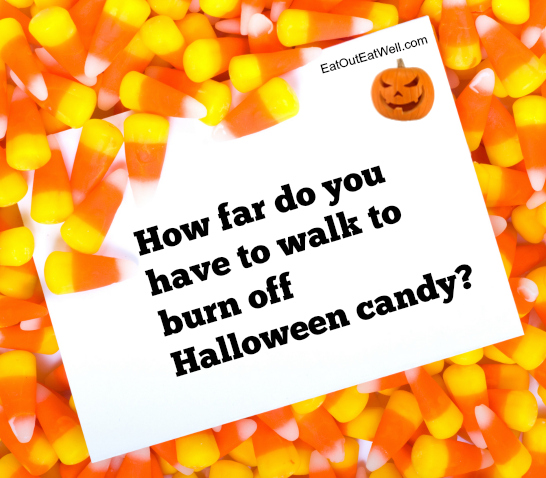The holidays are right around the corner. You can’t go into a supermarket or box store without holiday food and fixings just begging to be tossed into your cart.
Holidays create a “perfect storm” for eating way too much. They combine some of the worst cues and triggers for overeating: family drama, too much food (much of it sweet and fatty), tradition and ritual, stress eating, and the attitude of “why not – it’s the holidays.” All too frequently the default then becomes: “I’ll start my diet in the New Year, or after Easter, of in September after Labor Day” – or after a month of Sundays!
Do You Really Want To Count Calories On A Holiday?
No way. Holiday food is special and holiday traditions and rituals are hallmarks we count on.
When you restrict yourself of may foods, it often means that you end up depriving yourself of traditional and possibly your favorite foods that you associate with holidays. When you do deprive yourself of those cherished foods, more often than not you end up later that night standing in front of an open fridge rummaging for leftovers still feeling the sting from the stare down you had with your favorite foods earlier in the day.
What’s Your Holiday Game Day Plan?
What’s your game plan? Does it allow you to enjoy the holiday and the food (really important). On a holiday you know you’ll eat a bit more – or maybe a bit more than a bit more – than on a typical day.
Balance it out by allowing for a range of calories during the holiday and the days surrounding it. To maintain your weight, the overall number of calories you eat should approximate the calories you burn, so compensate by eating a little lighter the days before and after (and maybe adding in some extra activity).
15 Tips and Strategies
Here are some tips — choose what you can commit to and that will work best for you. Then build them into your personal holiday eating plan.
1. Don’t starve yourself the day of a holiday meal or party. If you attempt to save up calories for a splurge, you’ll probably be so hungry by the time dinner is served you’ll end up shoving food into your mouth faster than you can say turkey. Have a protein and fiber snack (around 150 calories) and something to drink beforehand, but don’t skip meals or arrive famished.
2. Give yourself permission to NOT eat something that you usually eat just because it’s a holiday tradition. Certain foods may taste, look, or smell like Thanksgiving or Christmas, but that doesn’t mean you have to eat them. It’s still the holiday without them.
3. Ask yourself if you’re eating something because you like it or are you eating it for another reason — perhaps because you’ve been eating the same holiday food since you were a kid. Maybe you don’t even like the food any more or it disagrees with you. So why are you eating it? Who’s forcing you to? Eat what you want — not what you think you should.
4. Say no to the friends and relatives who push the extra piece of pie and the second helping of stuffing, or who constantly refill your drink. You’re the one stepping on the scale or zipping up your jeans the next day – not them.
5. Have your own personal rules and swaps for what you will or won’t eat and commit to sticking with them ahead of time. Your rules are an integral part of your game plan. Examples might be: I really want pecan pie for dessert so I’ll only have one biscuit without butter with my meal. Or, I’ll only take two hors d’oeuvres from the passed trays at a cocktail party. This will both limit how much you eat and will also make you think carefully and choose what you really want instead of randomly sampling everything.
6. Acknowledge your red flags, your trigger foods. Can you be near Christmas cookies without eating a dozen? Do you overeat at family events? There’s no need to psychoanalyze why. Just know the things that serve as your red flags and have a plan to deal with them.
7. Decide what’s really worth an indulgence. Then fill up on the lower calorie volume foods — like vegetables — so you won’t have tons of room left for the splurges. If you’re a sucker for desserts, stick with lean protein and veggies for your main course followed by a reasonable slice of cheesecake. Or if the stuffing and au gratin potatoes are calling your name, have them, but skip or skimp on the desserts.
8. Make a deal (with yourself) that you can eat what you want during dinner. Put the food on your plate, eat it with a fork, and enjoy every last morsel. Clean your plate if you want to. But – that’s it. No seconds and no double-decking the plate.
9. Choose your beverages wisely. Alcohol clocks in at 7 calories a gram. Alcohol with mixers adds even more calories. Plus, alcohol takes the edge off lots of things – including your ability to stick to your plan. Drink water. It fills you up. Have a diet soda if you want. If you’re going to drink alcohol, try limiting the amount – think about alternating with water or seltzer.
10. Control your food environment the best you can. Don’t hang around the buffet table or stand next to the platter of delicious whatevers. Why are you tempting yourself? Go into another room or the farthest corner away from serving table.
11. Keep your back to the buffet. For most people, food that is out of sight is out of mind.
12. Don’t eat off of someone else’s plate, finish your kids’ food, sample your spouse’s pie, or take a taste of this and a taste of that as you walk around the party. One bite here and one bite there doesn’t seem like much, but add them up and you’ll be shocked. Mindless bites average about 25 calories apiece. Four mindless bites a day means around a hundred (extra) calories. Do this daily and by the end of a month you might have gained close to a pound. Because it’s so easy to overlook those hand to mouth sneaky bites, make a deal with yourself that you’ll only eat food that’s on a plate.
13. Have a conversation. It’s hard to shove food in your mouth when you’re talking. Hold a glass in your hand, even if it has water or seltzer in it, and a napkin in the other hand. It’s hard to nibble and nosh when your hands are full.
14. Get rid of leftovers. Leftover stuffing has defeated the best-laid plans and don’t nibble during clean up (or preparation for that matter). Broken cookies, pieces of pie crust, and the last bits of stuffing haven’t magically lost their calories.
15. Don’t multi-task. Try to avoid combining eating with other activities. Distractions are a major contributor to overeating. When you’re with family and friends the last thing on your mind is going to be how many nachos you just inhaled while some annoying in-law was yakking your ear off. TV is another major culprit. When you sit down to catch a game, parade, or a holiday special, be sure that there isn’t a big bowl of munchies sitting right next to you waiting to sabotage your waistline.
What If You Ate Everything In Sight?
If you ate everything is sight and your exercise was walking back and forth to the to the buffet table, take heart, It was just one day. It’s not so difficult to make up for your indulgences over the next few days.
The danger is letting it stretch into days or weeks. That’s when your waistline starts expanding and the pound you gained this year stays there and gets joined by another the following year.
Enjoy the holidays and the traditions that are important to you. Be thankful and joyous. Isn’t that the point?






